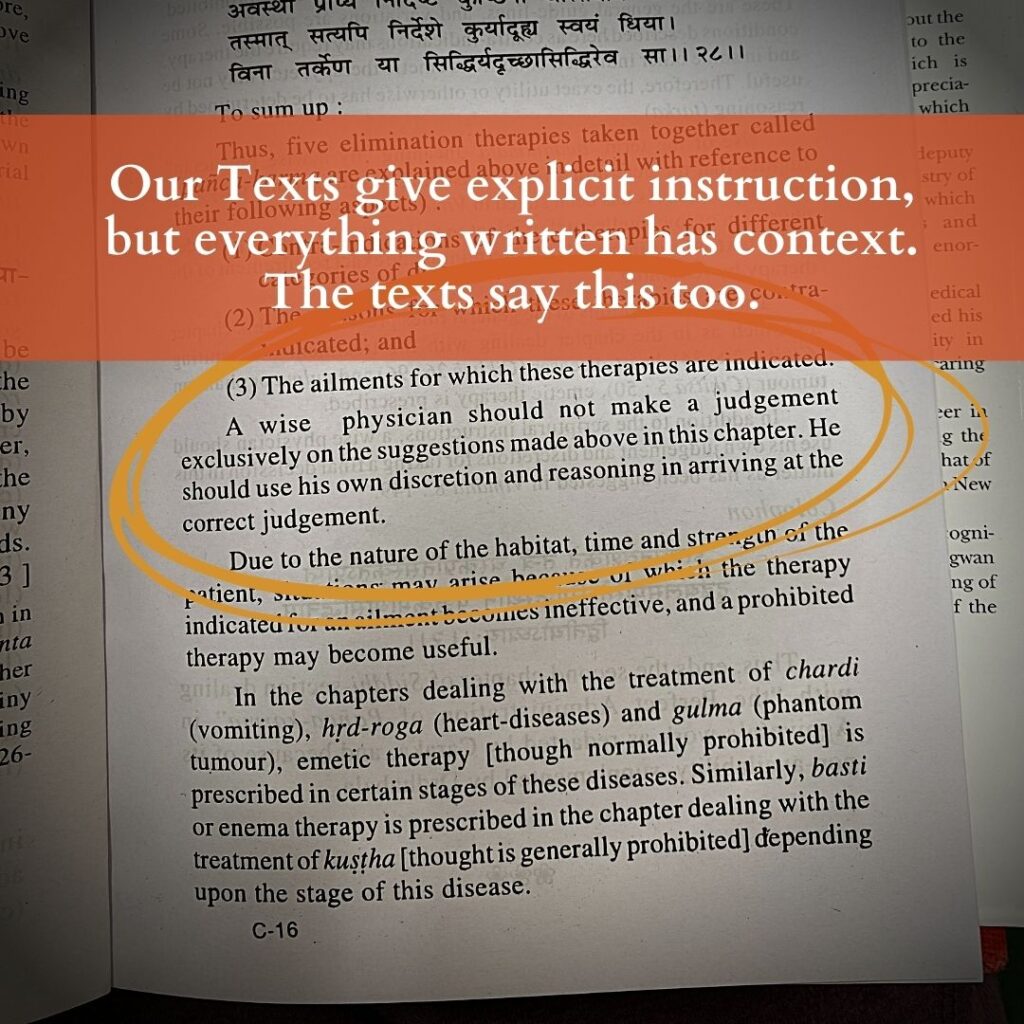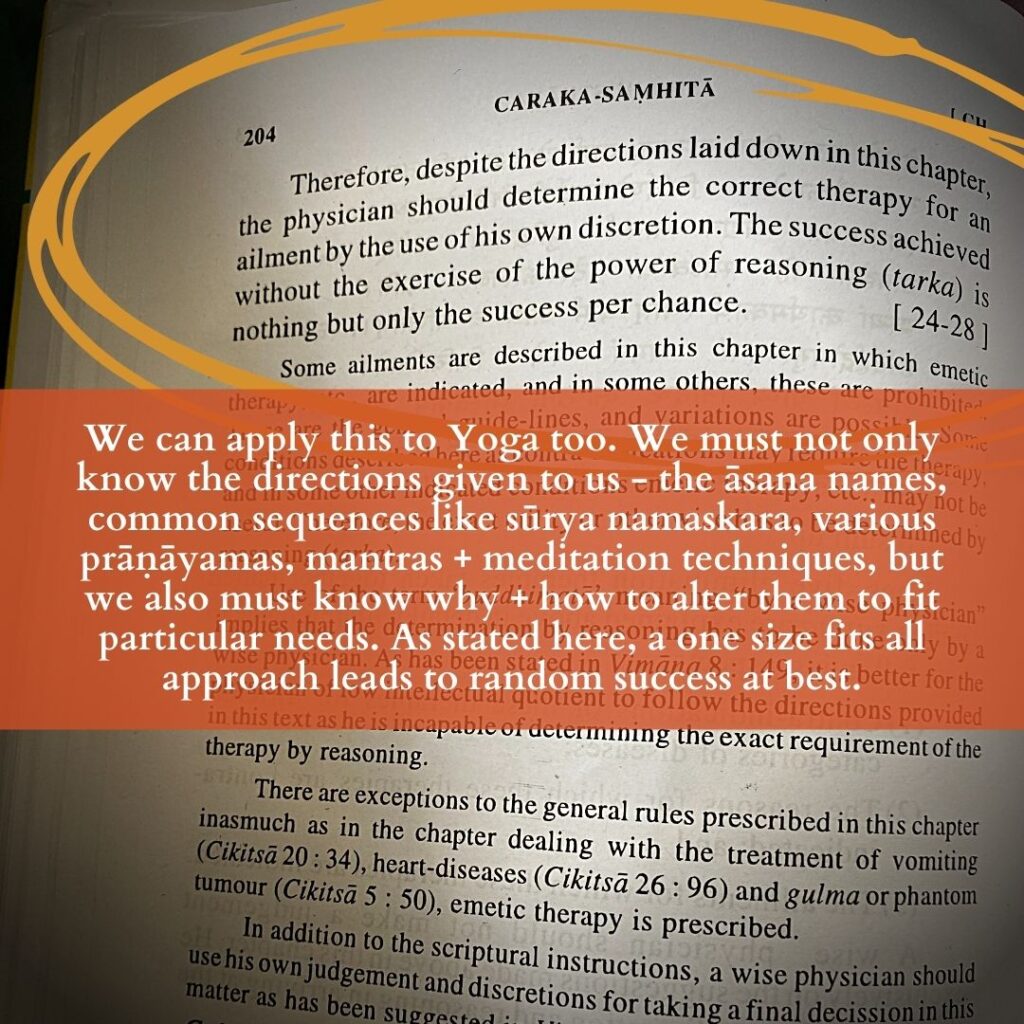In Āyurveda, Śatāvarī has become a popular herb that is often called adaptogenic. Taking this herb without understanding its innate properties, combinations + methods of use is wasteful at best + harmful at its worst.

This is from Caraka Siddhisthāna 2.24-28. The Siddhisthāna is the last book of the Caraka Saṃhitās. Much of this chapter is designed to clarify and review the pañca karma techniques, which is why these excerpts are here.
As I have mentioned previously, each śloka (line) of the Saṃhitās builds upon the one that came before. Thus, by this final book, the Siddhisthāna, Caraka is hopeful that not only does the Vaidya (practitioner) understand the foundational material written verbatim, but also has developed the capacity to understand the implications of each instruction.
Why is this important?
As we know, there are very few people who are “textbook cases.” In fact, really none of us are textbook anything. We are all very unique combinations of our own life histories. Thus, anyone utilizing any system has to take into account all the nuances that make us different and apply that to general instruction.

The texts we cover in the 200h Accelerated Āyurvedic Yoga Teacher Training – the Yoga Sūtras and the Bhagavad Gītā – give very explicit instructions on the ways to engage in the world so that self-realization is possible.
If we were to follow either of these texts dogmatically to a “T,” we would never reach Mokṣa because our capacity to discern what we are doing would be absent.
I remember once asking my Guru, “should I be chanting my morning mantras as quickly as possible to achieve a certain number of rounds?” She replied to me, “No. That is not necessary. You must hear and understand the meaning of what you are saying. It is not a certain number of rounds that will bring you into deep meditation, but by chanting only one time with full attention.”
But, also cannot just interpret the texts however we like to it fits into our current worldview, either. This is a trap of delusion itself.
So, to develop practice, we first need to learn the requests of the text of our system – in this case, Yoga and/or Āyurveda – and then we can begin to riff as Caraka indicates in the quote above.
If we do it too early though, we will be off the path, blindly heading the wrong way – and likely end up in the world of Beer Yoga etc. etc.

It is important to remember too that just as it says here in the Caraka, that there is “no drug which is absolutely free from shortcomings or which is absolutely free from good effects,” there is also no one āsana, or one particular magic sequence that rids the body and mind of its suffering.
The sequence does have innate qualities, however, that can be augmented – just like Śatāvarī – to create a very specific + healing result, but it is up to both the teacher and practitioner to receive these effects. As we have discussed many times, it is often not what we are doing but why and how.

